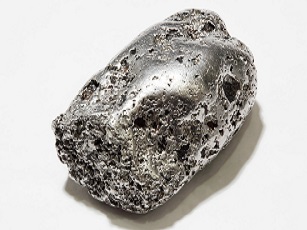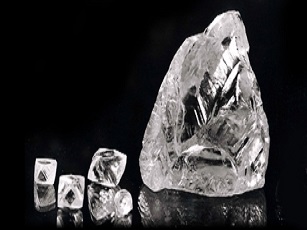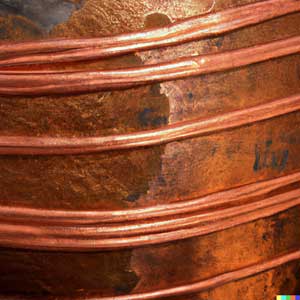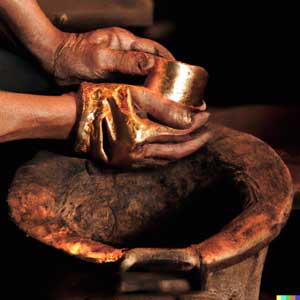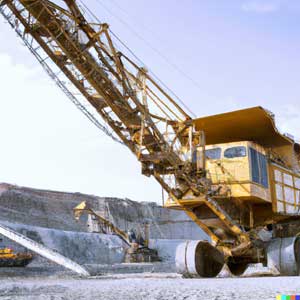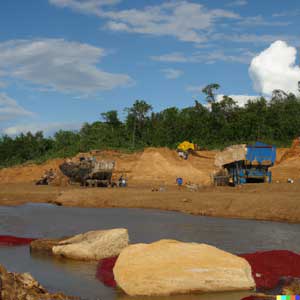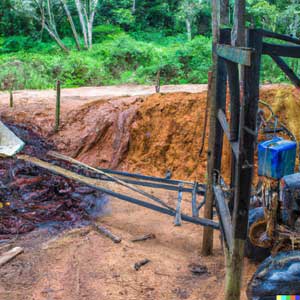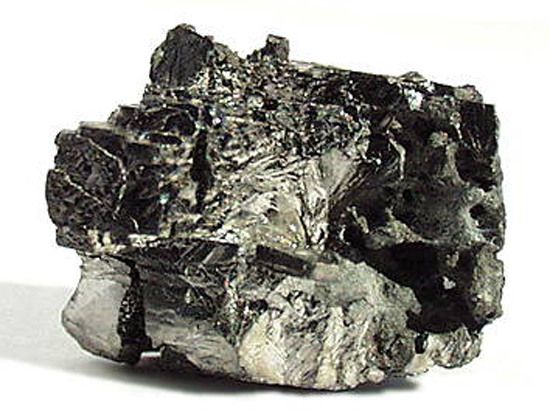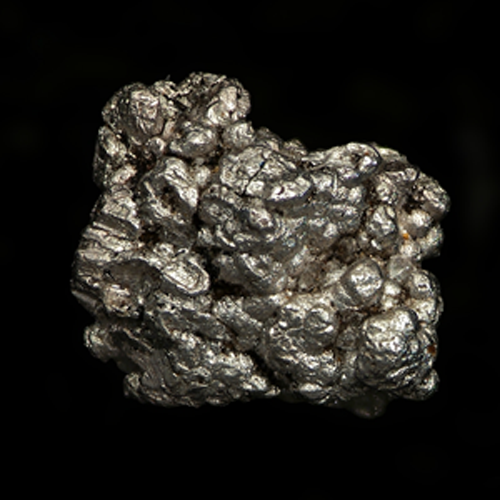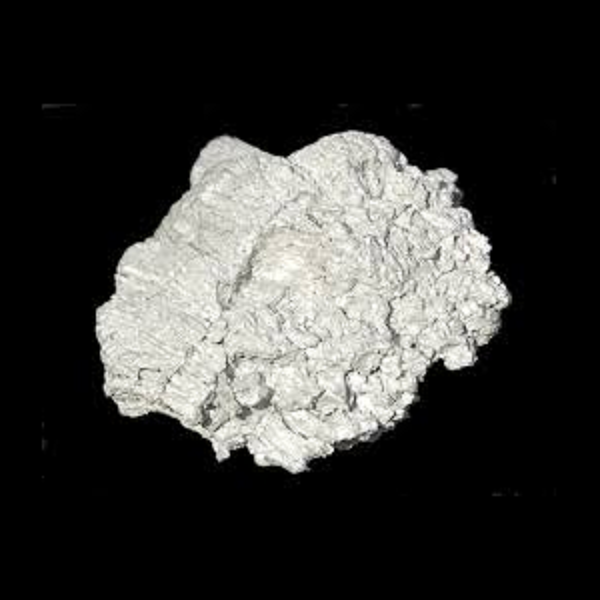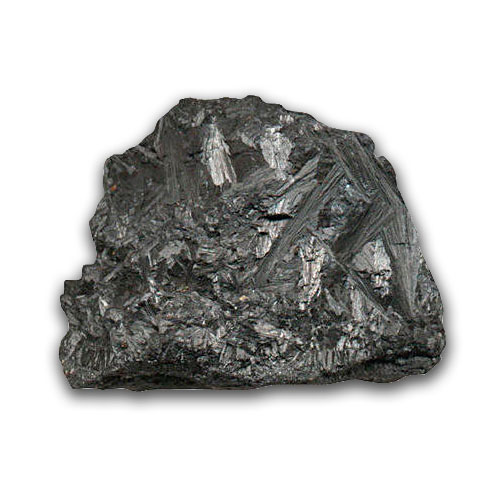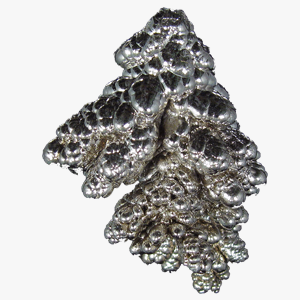Copper Mining In Amazon
COPPER MINING IN AMAZON :
Copper mining in the Amazon is a complex process that involves a variety of stakeholders, from local communities to large multinational corporations. The Amazon region is home to a variety of copper ore deposits, many of which are located in remote, inaccessible areas. Extracting copper from these deposits requires a combination of technical expertise, resources, and investment. The process starts with exploration and assessment of the sites, followed by the construction of infrastructure such as roads, power lines, and processing plants. After the ore is extracted, it is transported to smelters for processing and refining. Once refined, the copper ore is ready to be used in a variety of industrial applications.
The copper mining industry in the Amazon has both positive and negative impacts on the environment and local communities, including deforestation, water pollution, and displacement of local communities. To ensure that local communities benefit from the copper mining industry, governments and corporations are increasingly promoting sustainable development initiatives. These initiatives include better stakeholder engagement, corporate social responsibility programs, and responsible environmental management practices.
In addition to the direct impacts of copper mining, the Amazon region is home to a vast array of flora and fauna that are threatened by mining activities. To protect the Amazon's biodiversity, governments and mining companies are increasingly engaging in initiatives to protect the environment and reduce their negative impacts. These initiatives include reforestation, conservation efforts, and sustainable practices. With a commitment to responsible mining practices, the copper mining industry can help to protect the Amazon while also providing economic opportunities for local communities.
COPPER MINING TYPES IN AMAZON :
Small-Scale Artisanal Mining: This type of copper mining is typically conducted by individuals or small groups of miners who use traditional techniques and tools to extract copper ore from the Amazon rainforest.
Industrial Mining: This type of copper mining is conducted by larger companies that use heavy machinery and large-scale excavation techniques to extract copper ore from the Amazon rainforest.
Alluvial Mining: This type of copper mining is used when copper-rich sediment is found along the banks of rivers and streams in the Amazon rainforest. Miners use sluice boxes and dredges to collect the copper-rich sediment.
Bio-Mining: This type of copper mining uses bacteria to extract copper from the ore. This method is often used in conjunction with traditional mining techniques.
COPPER MINING PROCESS IN AMAZON :
The copper mining process in the Amazon starts with prospecting. In this process, geologists look for copper deposits in the earth using various techniques, such as examining the topography, using aerial photography, and using geophysical methods.
Once a copper deposit is identified, a team of geologists and engineers will analyze the deposit and determine the best way to extract the copper. This may involve blasting, digging, and transporting the ore to a processing facility. The ore is then crushed and ground, and chemicals are added to help separate the copper from the other minerals. The copper is then concentrated and smelted to extract the metal.
The resulting copper bars are then shipped to refineries where they are melted down and re-cast into different shapes and sizes. The refined copper is then used to make various products, from electrical wiring to jewelry.
WHERE IS COPPER MINING ?
Copper mining in the Amazon rainforest is not common, as the area is primarily used for slash-and-burn agriculture and subsistence farming. However, there are some copper mining operations located in the region, particularly in Venezuela and Ecuador. In Venezuela, copper mining is done on a large scale in the Bol?var State. The country is home to some of the largest mining operations in the world, with many of them operating in the Amazon rainforest. In Ecuador, copper mining has been linked to deforestation and human rights abuses, as many of the mining operations are carried out by large multinationals. There is also small-scale artisanal mining taking place in the Amazon, with individuals using rudimentary tools to extract the ore. This type of mining is often conducted without proper safety measures and can result in significant environmental damage.
HOW IS COPPER MINING IN AMAZON RAINFOREST :
Copper mining in the Amazon Rainforest is a complex process. It involves the extraction of copper from copper-bearing ore, which is usually mined from open-pit or underground mines. The ore is then processed and smelted to produce copper concentrate, which is then further refined to produce copper metal. Depending on the type of ore, additional processing steps such as crushing, grinding, flotation, and leaching may also be required.
In addition to the environmental impacts of the mining itself, copper mining in the Amazon Rainforest has a significant impact on the region's ecosystems and the people who depend on them. It can cause deforestation, soil erosion, water pollution, and other environmental disturbances. Furthermore, it can lead to conflict between local communities and mining companies, as well as displacement of indigenous people. Therefore, it is important to ensure that copper mining in the Amazon Rainforest is done in a sustainable and responsible manner. To achieve this, mining companies must adhere to international standards and regulations and work with local communities and governments to ensure that their operations are conducted in a way that minimizes their environmental and social impacts.
SMALL-SCALE ARTISANAL COPPER MINING :
Small-scale artisanal copper mining in the Amazon rainforest is largely done by hand and typically involves digging shafts and tunnels in the ground to access deposits of ore. Mining activity is often done on a seasonal basis, with individuals returning to their home villages during the rainy season. The miners may use simple tools, such as shovels and picks, to extract the ore from the ground, which is then crushed and processed to extract the copper. In some cases, the ore may be smelted in rudimentary furnaces to produce copper ingots for sale. In other cases, the ore is transported to larger, more sophisticated processing facilities elsewhere in the region. In addition to these activities, the miners may also engage in activities such as collecting scraps of copper from the forest floor or from discarded electronic waste. Such activities are often more difficult and time-consuming, but may be necessary to make ends meet.
The environmental impacts of small-scale artisanal copper mining in the Amazon are significant. Mining activities can cause deforestation, erosion, and pollution of waterways, which can have devastating effects on wildlife and the surrounding environment. In addition, the use of mercury-based processing techniques can result in toxic runoff that can further contaminate the waterways. Finally, the disposal of mine tailings can also cause soil contamination, impacting the long-term health of the land. To mitigate these impacts, it is important to ensure the miners are provided with proper safety equipment and training, and that strict regulations are put in place to protect the environment from the effects of mining.
PROCESS OF SMALL-SCALE ARTISANAL COPPER MINING :
1. Prospecting: Prospectors search for mineral deposits by studying the topography, geography, geology, and other features of the land. They look for signs of mineral deposits like veins, outcroppings, and other geological clues.
2. Claim staking: Once a prospector finds an area they believe has potential for containing minerals, they must stake a claim to that land. In many countries, this requires registering with the government and paying fees.
3. Exploration: The prospectors must then explore the claim to determine if it contains the minerals they are looking for. This can include using geophysical and geochemical methods to identify mineral deposits.
4. Mining: Once the minerals have been located, the miners must then extract them from the earth. This can involve using a variety of methods such as open pit or underground mining.
5. Processing: The minerals must then be processed to separate the valuable minerals from the waste material. This can involve crushing, grinding, and chemical processes.
6. Selling: The valuable minerals are then sold to buyers in the sector, such as jewelry makers or industrial companies. The money made from the sales helps fund the operations of the small-scale artisanal miners.
SMALL-SCALE ARTISANAL USES :
Small-scale artisanal mining uses a variety of methods for extracting minerals from the earth. These methods include panning, sluicing, dredging, hard-rock mining, and tunneling. Artisanal miners often use simple tools such as shovels, picks, and pans to extract minerals, and these tools are usually quite inexpensive. In addition, small-scale artisanal miners often use rudimentary methods of processing and refining minerals, such as grinding and panning. While these methods are often labor-intensive and can be hazardous, they are often the only way for many small-scale miners to access and extract minerals.
INDUSTRIAL MINING IN AMAZON :
Industrial mining in the Amazon is a massive industry that has a significant impact on the environment and the local economies of the countries involved. The Amazon is home to a wide variety of minerals and precious metals, which have been mined for centuries for use in a variety of industries.
The mining industry in the Amazon has grown significantly in recent years, driven by demand for materials used in construction, electronics and energy production. This has had a major impact on the environment, with deforestation, habitat destruction, water and air pollution, and soil erosion all common side effects of intensive mining operations.
In addition to the environmental impacts, industrial mining in the Amazon has a significant effect on the local economy. Mining is a major source of employment, and in some areas, it is the only viable source of income. It is also a major source of foreign investment, with many international companies setting up operations in the region.
The Amazon is a vital resource for the people and countries involved, and it is essential that mining operations are carefully managed to ensure that the environment and local economies are not adversely impacted. Governments, industry and local communities all have a role to play in preserving the Amazon and its resources for future generations.
INDUSTRIAL MINING IN AMAZON BENIFITS:
The benefits of industrial mining in Amazon include increased employment opportunities, improved infrastructure, and increased economic growth.
Increased Employment Opportunities: Industrial mining can create jobs in the Amazon region, as well as provide additional economic benefits. This can lead to an influx of skilled and unskilled labor, helping to reduce poverty and boost the local economy.
Improved Infrastructure: Industrial mining can help to improve infrastructure in the region, such as roads, bridges, and power systems. This can help to reduce the cost of transportation and increase access to resources.
Increased Economic Growth: Industrial mining can lead to increased economic growth in the region as it creates new markets for local goods and services. This can lead to increased incomes for local people and increased tax revenues for local governments.
INDUSTRIAL MINING IN AMAZON PROCESS:
Amazon's industrial mining process involves extracting valuable minerals from the earth using heavy machinery and other specialized equipment. The mining process begins with an exploration phase, wherein a mining company surveys and evaluates the potential of a given mineral deposit. This involves analyzing geological samples and other data to determine the potential mineral content, size, shape, and location of the deposit. Once the exploration phase is complete, the mining company can begin the extraction process. This typically involves using large-scale excavators and other heavy machinery to remove the mineral deposits from the earth. The mined material is then processed to separate the mineral content, which is then shipped off to processing plants for further refinement. The mining process ends with the reclamation of the land, which includes restoring the land to its pre-mining state.
ALLUVIAL MINING IN AMAZON :
Alluvial mining is a type of placer mining that involves the extraction of minerals or metals from alluvial deposits, which are sediments of sand, gravel, and other material deposited by water or ice. This type of mining is typically used to extract gold, diamonds, tin, and other precious minerals. In the Amazon, alluvial mining is often used to extract diamonds and other gemstones.
The process of alluvial mining begins with the use of water to loosen the sediment. The sediment is then transported to a site where it can be separated from the non-valuable material. This separation is usually done by panning, sluicing, or dredging. After the material has been separated, it is then washed and screened to remove any remaining dirt or impurities. Once the material has been cleaned, it can be sorted and graded for further processing.
In the Amazon, alluvial mining has been used for centuries to extract precious stones and metals from the region's rivers. The process has been instrumental in helping to build the local economy, providing employment and income to many families. However, alluvial mining can have a significant environmental impact on the region, leading to the contamination of rivers and streams and the destruction of habitats. For this reason, it is important that alluvial mining is done in a responsible manner, with appropriate safety and environmental protection measures in place.
WHERE IS ALLUVIAL MINING IN AMAZON :
Alluvial mining in the Amazon is the process of extracting valuable minerals or other materials from deposits found in the riverbeds and other low-lying areas of the Amazon basin. This type of mining is often done on a small scale and involves the use of basic tools and methods such as pans, sluices, dredges, and other simple machinery. Alluvial mining is a sustainable practice and is used to extract gold, diamonds, titanium, and other precious metals and minerals. This type of mining is particularly effective in areas with high concentrations of gold, diamonds, and other valuable minerals. It is also used to extract gemstones and other valuable materials from the riverbeds. Alluvial mining is an essential part of the economy of the Amazon and is responsible for providing livelihoods for many local people who depend on the resources it provides.
ALLUVIAL MINING IN AMAZON TYPES:
1. Shovel Mining: Shovel mining involves the use of manual labor to extract minerals from the riverbeds of the Amazon. This type of mining is typically done on smaller scale operations and requires minimal capital investment. It involves the use of large metal shovels to scoop up sediment and gravel from the riverbed, which is then processed to extract valuable minerals.
2. Suction Dredging: Suction dredging is a form of alluvial mining that uses large pumps to suck up sediment and mineral deposits from the riverbeds of the Amazon. The sediment and gravel are then processed to extract valuable minerals. Suction dredging requires a larger capital investment than shovel mining but is more efficient and can be done on a larger scale.
3. Sluicing: Sluicing is a form of alluvial mining that involves the use of sluices or channels to separate minerals from sediment and gravel. Water is used to carry the sediment down the sluice, which is then processed to extract valuable minerals. This type of mining requires more capital investment than shovel mining or suction dredging but is more efficient and can be done on a larger scale.
4. Hydraulic Mining: Hydraulic mining is an alluvial mining method that uses high-pressure jets of water to dislodge sediment and mineral deposits from the riverbed. This method requires a large capital investment but is very efficient and can be done on a larger scale. The sediment and gravel is then processed to extract valuable minerals.
WHAT IS BIO-MINING IN AMAZON :
Bio-mining, also known as biomining, is the process of using microorganisms to extract valuable metals from ores and other solid materials. It is becoming increasingly popular in the mining industry due to its cost-effectiveness and relatively low environmental impact compared to traditional mining methods. In Amazon, bio-mining is used to recover precious metals such as gold and copper from ore deposits. This is done by introducing specific species of bacteria or fungi into the ore deposits. These organisms then produce enzymes which break down the ore and release the metals, which can then be collected. Bio-mining is an important part of Amazon's sustainability strategy and has been used to reduce the environmental impact of mining in the region.
BIO-MINING IN AMAZON TYPES:
Bio-mining is a sustainable process for extracting valuable resources from natural or engineered bioprocesses. It is a form of biomining that utilizes natural microbial communities to extract and process minerals or organic materials from a particular environment. In the Amazon, bio-mining has been used to extract valuable resources from the riverbeds and soils. This process involves utilizing naturally occurring bacteria and fungi to extract minerals and organic materials from the soil. These bacteria and fungi convert the minerals and organic materials into useful resources, such as metals, minerals, and proteins. Bio-mining in the Amazon can be used to help create a more sustainable mining process and reduce the environmental impacts of mining. It can also help to increase the efficiency of the mining process and reduce the cost of extracting resources. Bio-mining in the Amazon can also be used to help reduce the impacts of deforestation and improve the health of the local environment.
HOW IS BIO-MINING IN AMAZON OBTAINED:
Bio-Mining in Amazon is a process of extracting valuable data from the vast amount of data stored in Amazon's cloud. Amazon provides a vast amount of data from their products, customers, services, and more. By leveraging this data, Amazon can gain valuable insights from the data that can be used to improve customer experience, optimize operations, and develop new products and services.
The process of Bio-Mining involves collecting and analyzing large amounts of data from Amazon's cloud. This data can be used to identify patterns and trends in customer behavior and product usage. By understanding customer behavior, Amazon can better understand the needs of their customers and develop new services and products to meet those needs. Additionally, by analyzing product usage data, Amazon can identify and optimize the operations of their products, making them more efficient and cost-effective.
Bio-Mining also enables Amazon to identify potential trends in the market and to better understand how their customers are using their products. This data can be used to develop new strategies and products to capitalize on these trends. Additionally, Amazon can use this data to better understand customer preferences and develop marketing strategies to target those preferences.
Overall, Bio-Mining in Amazon is a powerful tool for extracting valuable information from Amazon's vast data stores. By leveraging this data, Amazon can gain insights that can be used to improve customer experience, optimize operations, and develop new products and services.
Related Mining

